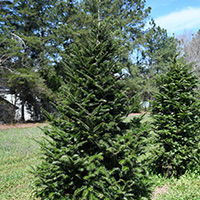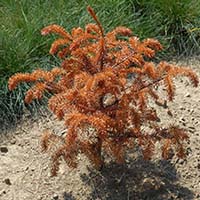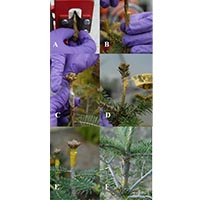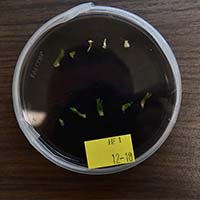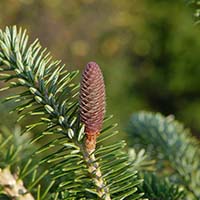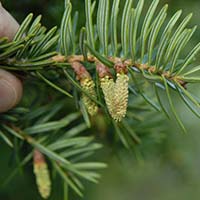During the holiday season in the U.S., more than 20 million freshly cut Christmas trees are sold every year, with fir trees topping the most-desired list. Unfortunately growers cannot meet the needs of consumers, and every year, there is a shortage of trees, primarily due to the incredible losses of susceptible firs — including balsam, Fraser, Canaan and others — to the root fungus Phytophthora.
This affects consumers in Georgia and other Southeastern states, as more than 50% of the region’s fresh-cut trees are imported. Georgia growers offer Leyland cypress (x Cupressocyparis lelandii), Arizona cypress (Cypessus arizonica), red cedar (Juniperus virginiana) and Virginia pine (Pinus virginiana), but in recent years the demand for fir trees has continued to rise. With this knowledge, research has progressed to develop a fir tree suitable for growing in the Southeastern U.S.
In the early 1990s, attempts were made to introduce the Momi fir (Abies firma), a heat-tolerant fir that can grow in the Southeast. The Momi fir has proven itself over the past 25 years as the only known fir species resistant to Phytophthora root disease, making it a good Christmas tree and ornamental or timber species.
Because of the more desirable Christmas tree characteristics of Fraser fir, many growers In North Carolina have been grafting Fraser fir (Abies fraseri) scion — or shoot — wood to Momi fir rootstock. This enables a grower to grow a Fraser fir that is on Momi fir rootstock in Phytophthora-infested soils. Although grafting can be used to provide a solution to this situation, it can also be problematic. Grafting is very labor intensive, with the central-leader scion wood being difficult to attain, and success in the process can be elusive. Many have attempted to grow the Momi fir as a standalone Christmas tree species, but the process requires selecting for desirable Christmas tree characteristics.
Unfortunately, it is difficult both to acquire Momi fir seed and germinate it, so growers needed a more reliable source of the species. In 2017, with a grant provided by the U.S. Department of Agriculture, research began to rescue embryos from Momi firs growing in Georgia. Embryos rescued from these trees could be cultured to produce hundreds of thousands of seedlings in less than six months if this propagation system could be developed. In mid-2019, a research team led by horticulture Associate Professor Mark Czarnota at the University of Georgia Griffin campus was able to create embryonic callus (a growing mass of plant cells) from rescued embryos of Momi firs growing in Georgia. In the near future, thousands of Momi fir seedlings could be made available to growers for rootstock and standalone Momi firs.
There are several characteristics of the Momi fir that make it undesirable as a Christmas tree, including picky foliage, an off-green color and the lack of a center leader. However, if the Momi fir could be crossed with other firs such as Fraser (Abies fraseri), balsam (Abies balsamea), Canaan (Abies balsamea var. phanerolepis), Nordman (Abies nordmanniana), Turkish (Abies bornmuelleriana) or the Guatemalan fir (Abies guatemalensis), hybrid embryos could be rescued, cultured into embryos and matured into seedlings. If a hybrid could be developed, it could provide an endless supply of a Phytophthora-resistant hybrid fir trees for the Christmas tree, ornamental and forestry industry in Georgia and the Southeast. This could open up fantastic financial opportunities for all of these industries in the region.
In order to create these hybrid firs, Momi fir trees growing in Athens, Griffin and Terrytown, Georgia, will be observed for female cone development. Once immature female cones (seed cones) are observed, they will be covered with pollen bags to prevent them from being pollinated by other Momi firs. When male cones are observed releasing pollen on Momi firs, covered female cones should be receptive and would be pollinated with pollen of Fraser or other desirable fir trees. When mature embryos are observed, hybrid cone embryos will be harvested and cultured to produce embryos and eventually seedlings. With any luck, these hybrids will be resistant to Phytophthora, forever changing our ability to grow firs in the Southeast.
For a current list of Georgia Christmas tree growers, visit the Georgia Christmas Tree Association website at gacta.com.

